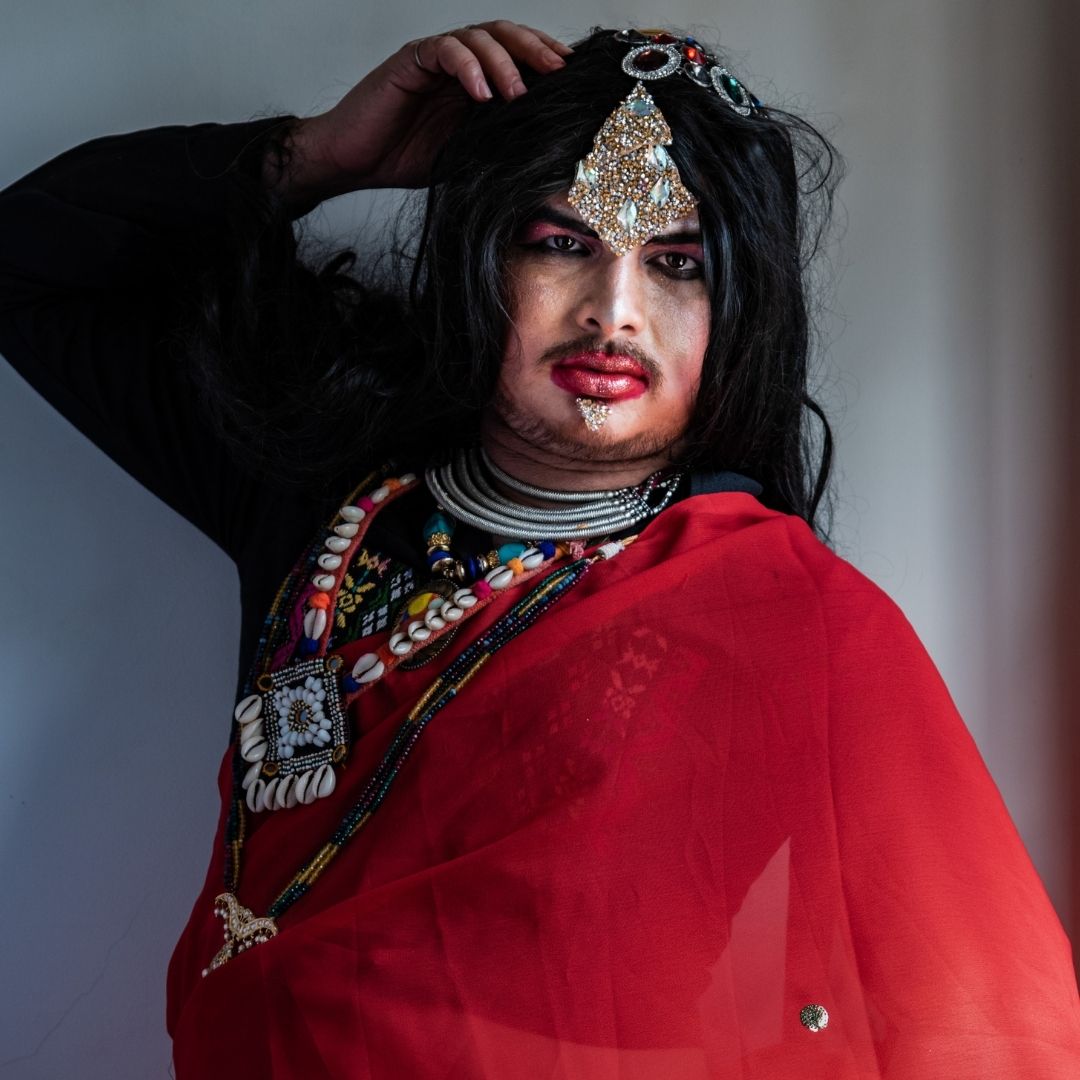
Image Credits: Manab Das (From The Source)
My Story: 'Drag Helps Me Bridge The Gap Between My Gender Visuality And My Performance As An Artist'
Telangana, 10 Jan 2022 1:46 PM GMT
Editor : Ankita Singh |
A literature lover who likes delving deeper into a wide range of societal issues and expresses her opinions about the same. Keeps looking for best-read recommendations while enjoying her coffee and tea.
Creatives : Akanksha Saxena
I am a budding journalist who loves to write stories that have the ability to connect with people.
Patruni Sastry learnt classical dances such as Kuchipudi, Bharatanatyam and Odissi at the age of 7. Now, as a Drag artist, Sastry uses the medium to raise awareness about pertinent issues and uses the same for self-expression.
I was just seven years old when the dancing bug bit me. I watched a film called 'Padayappa' where the actress broke into a dance when the hero rejected her. She used this medium as an outlet for her anger.
Coming from an orthodox Telugu family, my father encouraged me to take up Indian classical dance forms instead of their western counterparts. First, I learnt Kuchipudi from my aunt and then moved to Bharatanatyam.
The gap came about when I was navigating through my teenage years. As a child, no one points the finger at how you express yourself. However, it all changed when I reached adolescence. My peers often bullied me because I was considered 'effeminate'. I was touched at inappropriate places by strangers in the washroom after my dance recitals. This made me uncomfortable and took me away from dancing.
At some point, I made up my mind to restart it all by joining a dance school in Kakinada. However, my teacher there molested me, and the constant bullying and molestation took away all the happiness I got out of dancing.
From Classical Dance To Drag Performance
Eventually, I moved to Hyderabad and worked in an IT company as a Product Development Officer. During my time there, I met many people who belonged to the queer community. A queer film festival in the city was looking for performers, and I volunteered. That was the first time I went back to dancing. After this, I started hanging out with them more often. It was then that I came to terms with my gender-fluid identity at the age of 21. This was the same year when Section 377 was struck down.
The first time I saw a drag performance was in Bengaluru in 2018. I was intrigued by its idea and concept. What I did in Kuchipudi was just a form of the same. However, they both were poles apart. When I went back to Hyderabad, I talked with my friends about the shortage of such artists in the city. I wanted to be the first to do this. Therefore I did my first drag performance with a couple of my friends in June 2019.
Initially, I did not think of continuing this. However, once I started, there was no going back. Drag gave me a different kind of definition. It helped me bridge the gap between my gender visuality and my performance as an artist. Dance was not giving me the comfort of performing in a female body. Drag gave me more vocabulary to express myself with and as a template to present my gender.
Along with dance and Drag, I continued as Product Development Officer. I did not want to burden my livelihood by making the performing arts my only profession. I work in the IT company in the daytime, and I don my dancing shoes in the evening.
Drag As A Tool For Awareness
I used my drag performance to raise awareness about gender and sexuality. Classical dance must follow a strict framework and not deviate from it. It can be done metaphorically, but not literally. I needed another outlet to tell my story. During this time, I experimented with various forms such as Expressionism, where I used the Indian classical dance language to talk about gender and sexuality. One such example is a performance called 'Out of the Box' about the three genders and how binary works. Masks are the central props that I use in these performances.
As Drag is a visual medium, they effectively send the right message. It has the power to educate the masses. Several corporate spaces and governmental institutions are encashing upon it. I was invited to perform at an AIDS awareness programme where I used the art form to sensitise people about condoms and other aspects. I performed in 29 such spaces, and they were a huge success!
In all, Drag is a part of who I am. It has acquainted me with my identity and made me more comfortable in my skin. I aim to blend dance and Drag together in the future, which is evident in my recent works. I want to open a school where I can teach this medium. I am working towards making Telugu folk songs on gender and sexuality. If it reaches many people, half of my job is done.
If you too have an inspiring story to tell the world, send us your story at mystory@thelogicalindian.com
 All section
All section














